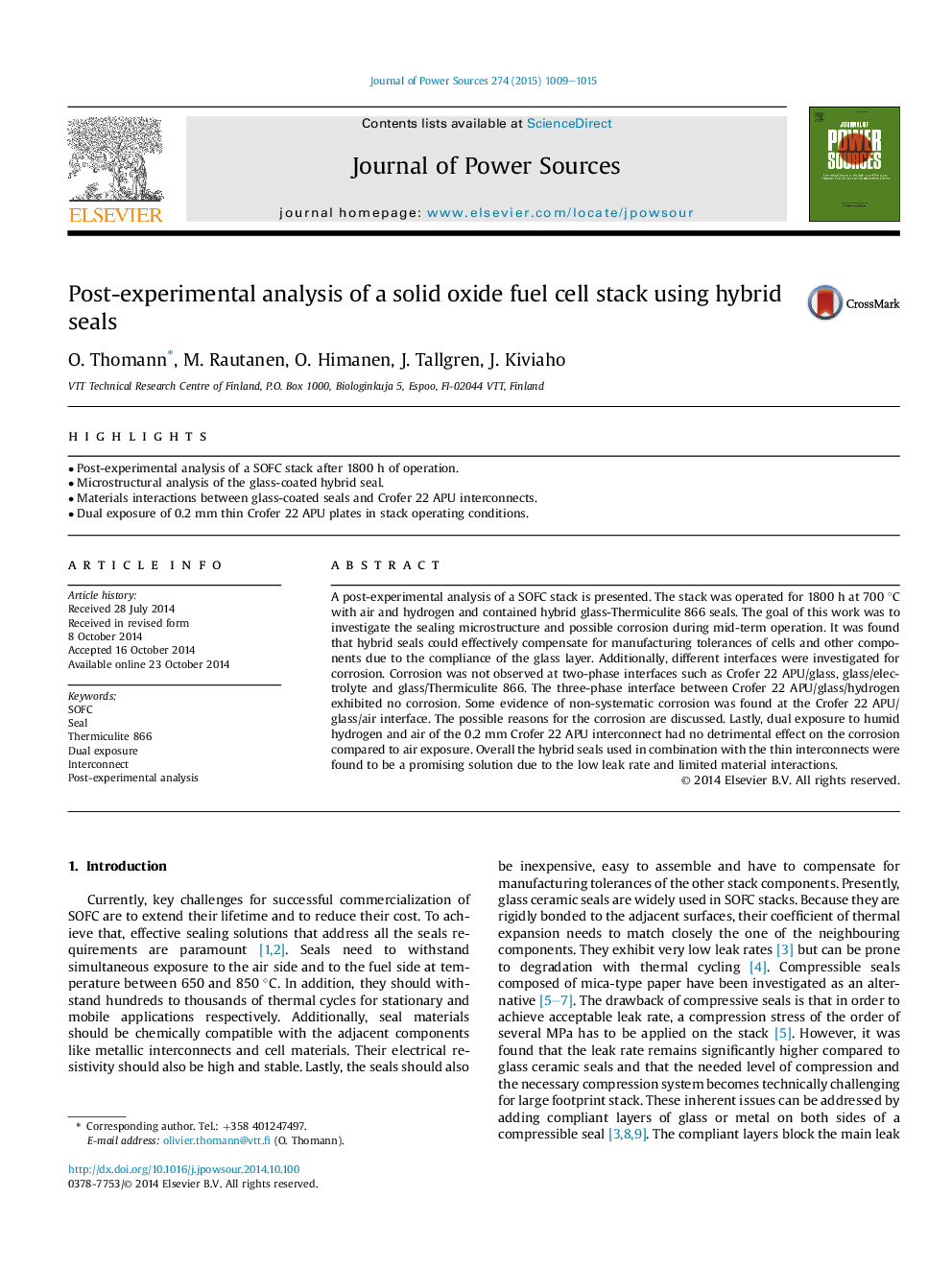| Article ID | Journal | Published Year | Pages | File Type |
|---|---|---|---|---|
| 7734395 | Journal of Power Sources | 2015 | 7 Pages |
Abstract
A post-experimental analysis of a SOFC stack is presented. The stack was operated for 1800 h at 700 °C with air and hydrogen and contained hybrid glass-Thermiculite 866 seals. The goal of this work was to investigate the sealing microstructure and possible corrosion during mid-term operation. It was found that hybrid seals could effectively compensate for manufacturing tolerances of cells and other components due to the compliance of the glass layer. Additionally, different interfaces were investigated for corrosion. Corrosion was not observed at two-phase interfaces such as Crofer 22 APU/glass, glass/electrolyte and glass/Thermiculite 866. The three-phase interface between Crofer 22 APU/glass/hydrogen exhibited no corrosion. Some evidence of non-systematic corrosion was found at the Crofer 22 APU/glass/air interface. The possible reasons for the corrosion are discussed. Lastly, dual exposure to humid hydrogen and air of the 0.2 mm Crofer 22 APU interconnect had no detrimental effect on the corrosion compared to air exposure. Overall the hybrid seals used in combination with the thin interconnects were found to be a promising solution due to the low leak rate and limited material interactions.
Keywords
Related Topics
Physical Sciences and Engineering
Chemistry
Electrochemistry
Authors
O. Thomann, M. Rautanen, O. Himanen, J. Tallgren, J. Kiviaho,
